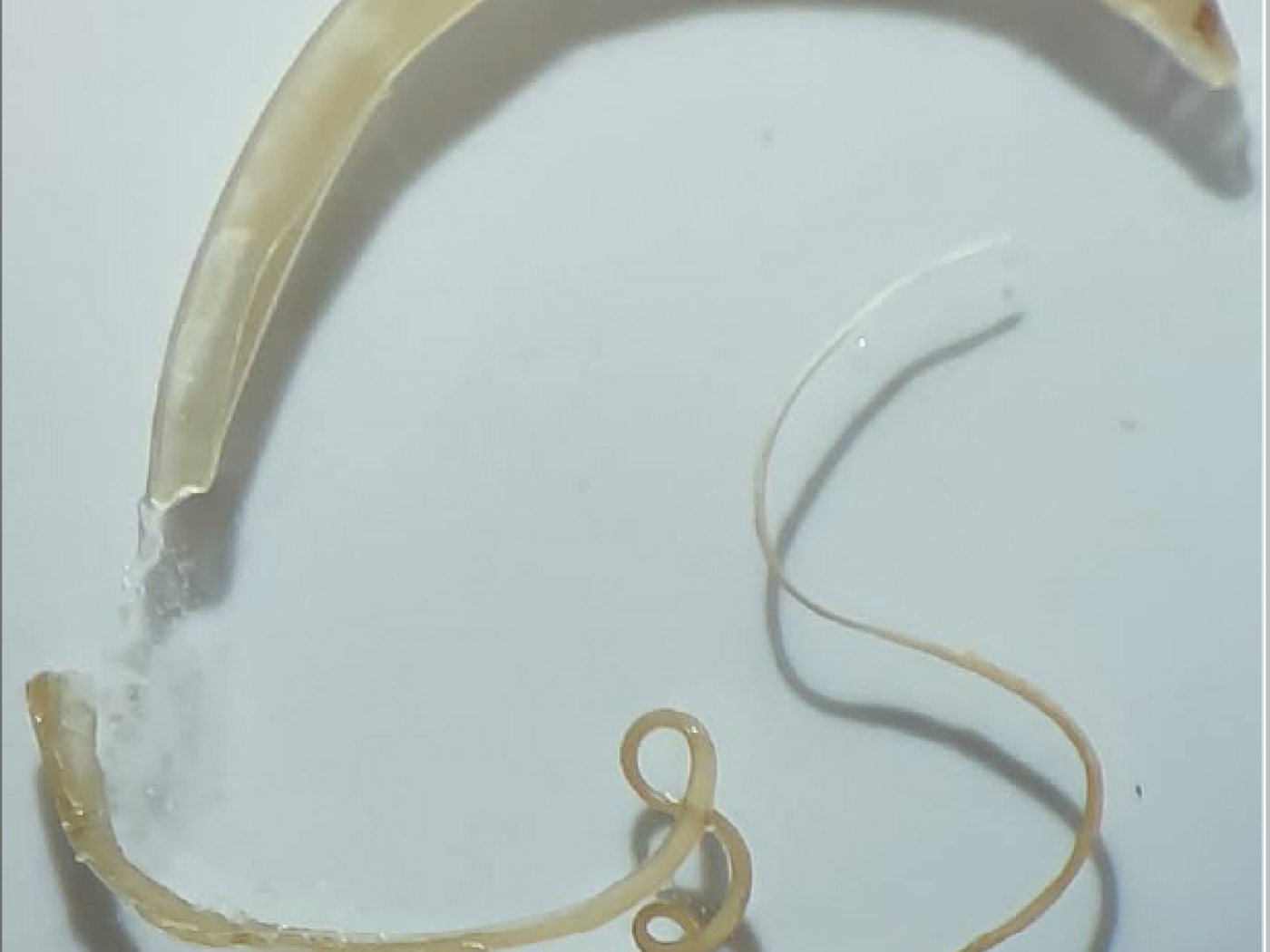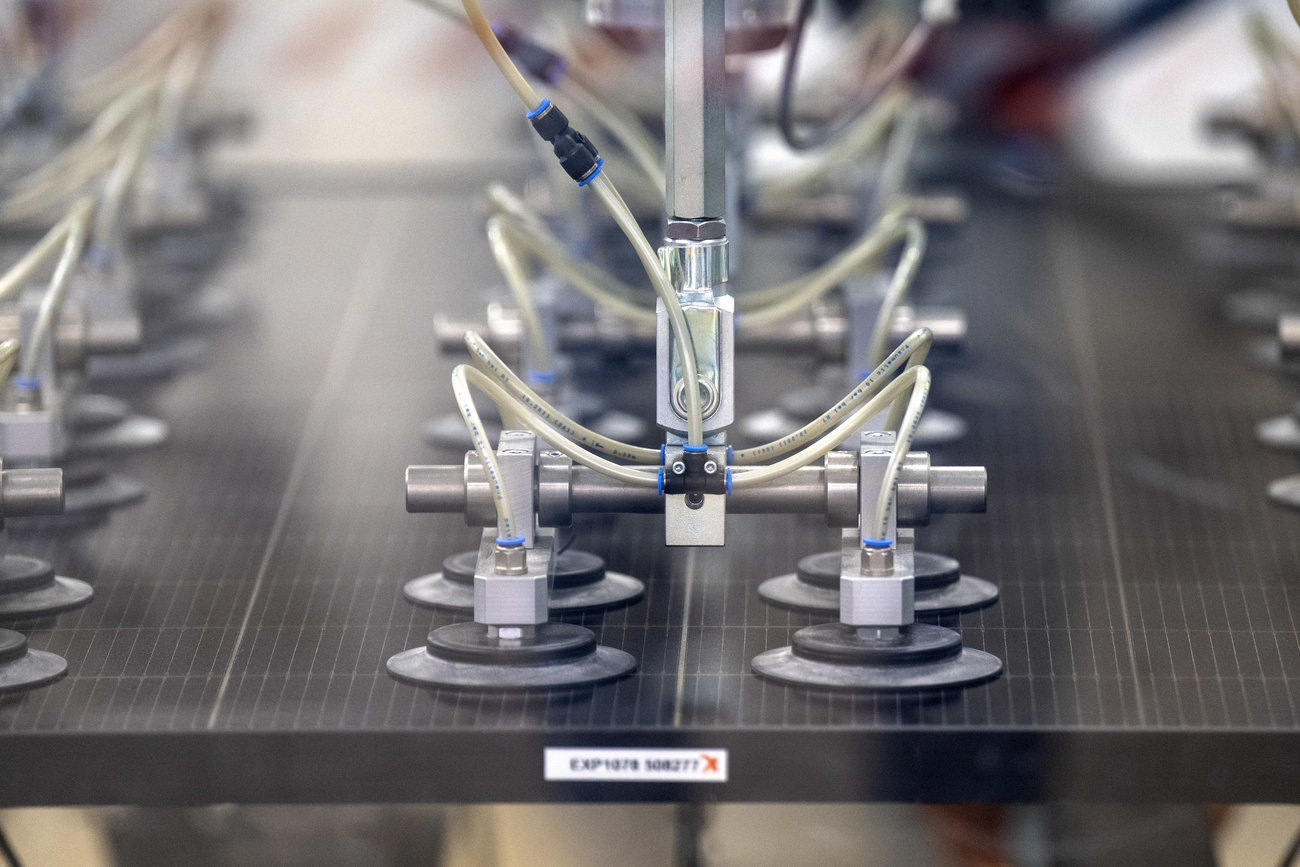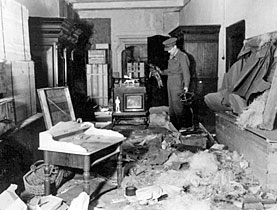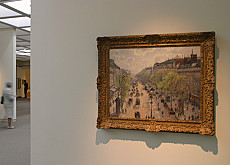
Swiss want clearer picture of looted Nazi art

After works of art plundered by the Nazis ended up in Switzerland, a report commissioned by the government says more needs to be done to trace the origins of these objects.
The report, published this week by the Federal Culture Office, said access to the results of provenance research and to relevant archives must be simplified.
“There’s a need to improve information and awareness at all levels in public and private museums,” Benno Widmer, head of the contact bureau on looted art at the Federal Culture Office, told swissinfo.ch.
“Provenance research must also be intensified.”
The report was carried out between July 2008 and October 2010 in cooperation with the cantons and museum associations. Questionnaires were sent to 551 museums, 416 of whom responded. It also included the results of the Holocaust Era Assets Conference held in Prague in June 2009.
Looted art made it into Switzerland in various ways before, during and after the Second World War. This is a major issue for the art market, since legitimate organisations say they no longer want to deal in objects with unclear ownership titles.
“The main challenges are hard-to-access or locked archives and different research methods and standards,” Widmer said.
“Also lacking at present is a broad cross-linking of information and professional expertise that can be developed by investigating commissions, interested organisations and individual researchers.”
Switzerland has some 1,000 museums, one of the densest museum networks in the world, with one for about every 7,500 people. The number has more than trebled since 1950, with the greatest increase in regional museums.
“Fair and just solutions”
At the international level, Switzerland – together with 43 other countries – has signed the Washington Conference Principles on Nazi-Confiscated Art and adopted the Terezin Declaration on looted art. But do these agreements actually make much difference?
“The international declarations dealing with looted art are declarations of intent. They maintain that it is the will of the Swiss authorities and many other states to achieve fair and just solutions in this field,” Widmer said.
As for how big the problem of looted Nazi art is in Switzerland, he says that although some art plundered by the Nazis ended up in Switzerland, “it’s not possible, from the results of this voluntary survey, to say to what extent Switzerland is really affected as long as the provenance of the artworks is not established”.
Good will
Dieter Schwarz, director of the Fine Art Museum in Winterthur and previously head of the Swiss Art Museums Association for more than ten years, said the problem for Swiss museums was “not too big”.
“In Switzerland there were very few museums with sufficient means to buy international important artworks in the Forties and in the Fifties,” he told swissinfo.ch.
For him, the greatest challenge is that documentation on the history of artworks is very often missing or lacking important elements as a result of being in private hands.
Schwarz says signing the international declarations is a sign of good will. “However, every institution has to do research on its collection by its own means and these are very limited financially and concerning staff.”
Not the first
Art looting has a long history – Egyptian pharaohs and their tombs being some of the earlier victims – with the winning party of armed conflicts often plundering the loser. In the absence of law and order, the local population often joined in – also after natural disasters.
While the Nazis were neither the first nor the last to loot art on a large scale – recent reports have focused on cultural pillaging in Iraq and Afghanistan – “looted art” is often referred to that plundered by the Nazis between 1933 and the end of the Second World War.
“There has not been a case for looted art from Asian or African countries in a Swiss museum collection,” Schwarz said.
“For the art museums the problem is with Second World War looted art.”
“Greatest mass robbery ever”
According to the Jewish Claims Conference, the Nazis took an estimated 650,000 art and religious items from Jews and other victims. This has been described as “the greatest mass robbery” ever.
Works were handed over to top Nazi officials, auctioned off or stashed away in salt mines, caves and old castles for protection from Allied bombing raids. Some ended up in Switzerland, and in 1947 a law was enacted to return this art to its rightful owners.
The issue was forgotten during the Cold War but resurfaced in the 1990s. A turning point was an article by historian Thomas Buomberger, revealing that Swiss art dealers had been instrumental in the trafficking of stolen Nazi art. This came at a time when revelations had surfaced about Swiss banks handling assets taken by the Nazis.
The 1998 Washington Principles have been signed by Switzerland and 43 other nations. Under the voluntary agreement, countries have agreed to identify stolen art, open up archives, and achieve a “just and fair solution” with the original owners and their heirs.
According to Andrea Raschèr, a legal expert in art, just and fair solutions can range from restitution, payment for the work, selling and sharing the profits between original and present owner, to a museum showing a work with its cultural history clearly signposted.
There is a dispute in St Gallen about Swiss artist Ferdinand Hodler’s “Stockhorn chain with Lake Thun”, it was reported in the media in June 2009.
In 1935 the Jewish businessman Max Silberberg was forced to sell most of his art collection, which is alleged to have included the Hodler.
The picture – bought in the 1980s when its provenance was unknown – now belongs to a foundation and is housed at the St Gallen Fine Arts Museum. It is being claimed by Silberberg’s daughter in law, Greta Silberberg. A decade ago, the Graubünden Fine Arts Museum returned a picture to her, which had been given as a gift to the museum in 1992.
Camille Pissarro’s Le Quai Malaquais et l’Institut has been removed from sale at Christie’s auction house in London over an ownership dispute, it has been reported. The picture, looted by the Gestapo, was previously stored in a Swiss bank vault.

In compliance with the JTI standards
More: SWI swissinfo.ch certified by the Journalism Trust Initiative







































You can find an overview of ongoing debates with our journalists here . Please join us!
If you want to start a conversation about a topic raised in this article or want to report factual errors, email us at english@swissinfo.ch.